John Buchan, 1st Baron Tweedsmuir
His Excellency The Right Honourable The Lord Tweedsmuir GCMG, GCVO, CH, PC |
|
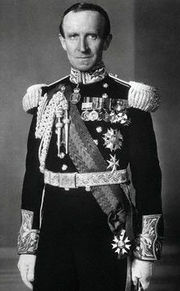 |
|
|
|
|
|---|---|
| In office 2 November 1935 – 11 February 1940 |
|
| Monarch | George V Edward VIII George VI |
| Prime Minister | R. B. Bennett Mackenzie King |
| Preceded by | The Earl of Bessborough |
| Succeeded by | The Earl of Athlone |
|
|
|
|
|
|
| Born | 26 August 1875 Perth, Scotland |
| Died | 11 February 1940 (aged 64) Montreal, Quebec |
| Spouse(s) | Susan Buchan, Baroness Tweedsmuir |
| Profession | Author |
| Religion | Free Church of Scotland, United Free Church of Scotland, Church of Scotland |
| Signature |  |
John Buchan, 1st Baron Tweedsmuir GCMG GCVO CH PC (26 August 1875 – 11 February 1940) was a Scottish novelist and Unionist politician who served as Governor General of Canada, the 15th since Canadian Confederation.
After a brief career in law, Buchan simultaneously began writing and his political and diplomatic career, serving as a private secretary to the colonial administrator of various colonies in Southern Africa, and eventually wrote propaganda for the British war effort in First World War. Once back in civilian life, Buchan was elected Member of Parliament for the Combined Scottish Universities, but spent most of his time on his writing career. He wrote The Thirty-Nine Steps and other adventure fiction. He was in 1935 appointed as governor general by George V, king of Canada, on the recommendation of Prime Minister of Canada Richard Bennett, to replace the Earl of Bessborough as viceroy, and occupied that post until his death in 1940. Buchan proved to be enthusiastic about literacy, as well as the evolution of Canadian culture, and he received a state funeral in Canada before his ashes were returned to the UK and interred at Elsfield, Oxfordshire.
Contents |
Early life and education
Buchan was the first child of John Buchan — a Free Church of Scotland minister — and Helen Jane Buchan. Born in Perth,[1] Buchan was raised in Kirkcaldy, Fife, and spent many summer holidays with his grandparents in Broughton, in the Scottish Borders. There he developed a love of walking, as well as for the local scenery and wildlife, which often featured in his novels; the name of a protagonist in a number of Buchan's books — Sir Edward Leithen — is borrowed from the Leithen Water, a tributary of the River Tweed.
After attending Hutchesons' Grammar School, Buchan was at age 17 awarded a scholarship to the University of Glasgow, where he studied classics, wrote poetry, and became a published author. With a junior Hulme scholarship, he moved on in 1895 to study Literae Humaniores (the Oxonian term for the Classics) at Brasenose College, Oxford,[2] where he befriended a number of individuals, including Hilaire Belloc, Raymond Asquith, and Aubrey Herbert. Buchan won both the Stanhope essay prize, in 1897, and the Newdigate Prize for poetry the following year,[2] as well as being elected as the president of the Oxford Union and having six of his works published.[3] It was at around the time of his graduation from Oxford that Buchan had his first portrait painted, done in 1900 by a young Sholto Johnstone Douglas.[4]
Life as an author and politician

Buchan entered into a career in diplomacy and government after graduating from Oxford, becoming the private secretary to Alfred Milner, who was then the High Commissioner for Southern Africa, Governor of Cape Colony, and colonial administrator of Transvaal and the Orange Free State, putting Buchan in what came to be known as Milner's Kindergarten. He also gained an acquaintance with a country that would feature prominently in his writing, which he resumed upon his return to London, at the same time entering into a partnership in the Thomas Nelson & Son publishing company and becoming editor of The Spectator.[5] Buchan also read for and was in 1907 called to the bar,[6] though he did not practice as a lawyer,[7] and, on 15 July of the same year, married Susan Charlotte Grosvenor — a cousin of the Duke of Westminster — and together they had four children, two of whom would spend most of their lives in Canada.[6]
Buchan wrote Prester John in 1910, the first of his adventure novels set in South Africa, and the following year he suffered from duodenal ulcers, which also inspired one of his characters in later books. At the same time, Buchan ventured into the political arena, and ran as a Unionist candidate in a Scottish Borders constituency; he supported free trade, women's suffrage, national insurance, and curtailing the powers of the House of Lords,[8] though he did also oppose the welfare reforms of the Liberal Party, and what he considered to be the "class hatred" fostered by demagogic Liberals like David Lloyd George.[9]
With the outbreak of the First World War, Buchan went to write for the British War Propaganda Bureau and worked as a correspondent in France for The Times. He continued to write fiction, however, and in 1915 published his most famous work, The Thirty-Nine Steps, a spy-thriller set just prior to World War I. The novel featured Buchan's oft used hero, Richard Hannay, whose character was based on Edmund Ironside, a friend of Buchan from his days in South Africa. A sequel, Greenmantle, came the following year. Buchan then enlisted in the British Army and was commissioned as a second lieutenant in the Intelligence Corps, where he wrote speeches and communiqués for Sir Douglas Haig. Recognised for his abilities, Buchan was in 1917 appointed as the Director of Information, under the Lord Beaverbrook[6] — a job Buchan said was "the toughest job I ever took on"[10] — and also assisted Charles Masterman in publishing a monthly magazine that detailed the history of the war, the first edition appearing in February 1915 (and later published in 24 volumes as Nelson's History of the War). It was difficult however, given his close connections to many of Britain's military leaders, for Buchan to be critical of the British Army's conduct during the conflict.[11]
Following the close of the war, Buchan, along with his usual thrillers and novels, turned his attention to writing on historical subjects. By the mid-1920s, he was living in Elsfield and had become president of the Scottish Historical Society, a trustee of the National Library of Scotland,[6] and maintained ties with various universities. Robert Graves, who lived in nearby Islip, mentioned his being recommended by Buchan for a lecturing position at the then newly founded Cairo University and, in a 1927 by-election, Buchan was elected as the Unionist Party Member of Parliament for the Combined Scottish Universities. Politically, he was of the Unionist-Nationalist tradition, believing in Scotland's promotion as a nation within the British Empire.[n 1] The effects of the Great Depression in Scotland, and the subsequent high emigration from that country, also led Buchan to reflect: "We do not want to be like the Greeks, powerful and prosperous wherever we settle, but with a dead Greece behind us,"[12] and he found himself profoundly affected by John Morley's Life of Gladstone, which Buchan read in the early months of the Second World War. He believed Gladstone had taught people to combat materialism, complacency, and authoritarianism; Buchan later wrote to Herbert Fisher, Stair Gillon, and Gilbert Murray that he was "becoming a Gladstonian Liberal."[13]
After the United Free Church of Scotland joined in 1929 with the Church of Scotland, Buchan remained an active elder of St. Columba's Church in London, as well as of the Oxford Presbyterian parish. In 1933 and 1934, Buchan was further appointed as the King's Lord High Commissioner to the General Assembly of the Church of Scotland. However, beginning in 1930, Buchan also aligned himself with Zionism and the related Palestine All Party Parliamentary Group.[14] In recognition of his contributions to literature and education, on 1 January 1932, Buchan was granted the personal gift of the sovereign of induction into the Order of the Companions of Honour.[15]
In 1935, Buchan's literary work was adapted to the cinematic theatre with the completion of Alfred Hitchcock's The 39 Steps, starring Robert Donat as Richard Hannay, though with Buchan's story much altered. This came in the same year that Buchan was, on 23 May, honoured with appointment to the Order of St. Michael and St. George,[16] as well as being elevated to the peerage, when he was on 1 June created by King George V as Baron Tweedsmuir of Elsfield in the County of Oxford.[17] This had been done in preparation for Buchan's appointment as Canada's governor general; Canadian prime minister William Lyon Mackenzie King had recommended to the King that he allow Buchan to serve as viceroy as a commoner, but George V insisted that he be represented by a peer.
Governor generalship
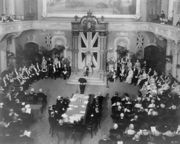
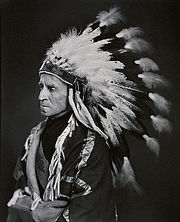
It was announced from the Canadian prime minister's office on 10 August 1935 that the King had, by commission under the royal sign-manual and signet, approved Mackenzie King's recommendation of Buchan as the viceregal representative. Buchan then departed for Canada and on 2 November 1935 was sworn in as the country's governor general in a ceremony in the salon rouge of the parliament buildings of Quebec. Buchan was the first viceroy of Canada appointed since the enactment on 11 December 1931 of the Statute of Westminster, and was thus the first to have been decided on solely by the monarch of Canada in his Canadian council.
Though Buchan continued writing during his time as governor general, he also thereafter took his position as viceroy with seriousness and from the outset made it his goal to travel the length and breadth of Canada, including, for the first time for a governor general,[3] the arctic regions; he said of his job: "a Governor General is in a unique position for it is his duty to know the whole of Canada and all the various types of her people." Buchan also encouraged a distinct Canadian identity and national unity, despite the ongoing Great Depression and the difficulty it caused for the population.[6] Not all Canadians, however, shared Buchan's views; he raised the ire of imperialists when he said in Montreal in 1937: "a Canadian's first loyalty is not to the British Commonwealth of Nations, but to Canada and Canada's King,"[18] a statement the Montreal Gazette dubbed as "disloyal."[19] At the same time, Buchan was championing an early form of multiculturalism in Canada; from his installation speech onwards, he maintained and recited his idea that ethnic groups "should retain their individuality and each make its contribution to the national character," and "the strongest nations are those that are made up of different racial elements."[20]
The following year proved to be a tumultuous one for the monarchy that Buchan represented. In late January, George V died, and his eldest son, the popular Prince Edward, acceded to the throne as Edward VIII, while Rideau Hall — the royal and viceroyal residence in Ottawa — was decked in black crepe and all formal entertaining was cancelled during the official period of mourning. As the year unfolded, however, it became evident that the new king planned to marry the American divorcée Wallis Simpson, which caused much discontent throughout the dominions. Buchan conveyed to Buckingham Palace and British prime minister Stanley Baldwin Canadians' deep affection for the King, but also the outrage to Canadian religious feelings, both Catholic and Protestant, that would occur if Edward VIII married Simpson.[21] By 11 December, the King had abdicated in favour of his younger brother, Prince Albert, Duke of York, who was thereafter known as George VI. In order for the line of succession for Canada to remain parallel to those of the other Dominions, Buchan, as governor-in-council, gave the government's consent to the British legislation formalising the abdication, and in 1937 ratified this with finality when he granted Royal Assent to the Canadian Succession to the Throne Act.[22]
In May and June 1939 the new king and his royal consort toured the country from coast to coast and paid a state visit to the United States on behalf of Canada. The royal tour had been conceived by Buchan before the coronation in 1937; according to the official event historian, Gustave Lanctot, the idea "probably grew out of the knowledge that as his coming Coronation, George VI was to assume the additional title of King of Canada," and Buchan desired to demonstrate with living example — through Canadians seeing "their King performing royal functions, supported by his Canadian ministers" — the fact of Canada's status as an independent kingdom.[23] Buchan put great effort into securing a positive response to the invitation sent to the King in May 1937; after more than a year without a reply, in June 1938 Buchan headed to the United Kingdom for personal holidays, but also to procure a decision on the possible royal tour. From his home near Oxford, Buchan wrote to Mackenzie King: "The important question for me is, of course, the King's visit to Canada." After a period of convalescence at Ruthin Castle, Buchan, in October, sailed back to Canada with a secured commitment that the King and Queen would tour the country. Though he had been a significant contributor to the organisation of the trip, Buchan retired to Rideau Hall for the duration of the King's time in Canada; Buchan expressed the view that while the King of Canada was present, "I cease to exist as Viceroy, and retain only a shadowy legal existence as Governor-General in Council."[23] In Canada itself the royal couple took part in public events such as the opening of the Lions Gate Bridge in May 1939.
Another factor behind the tour, however, was public relations: the presence of the King and Queen, both in Canada and the United States, was calculated to shore up sympathy for Britain in anticipation of hostilities with Nazi Germany. Buchan's experiences during the First World War made him averse to conflict, he tried to help prevent another war in coordination with United States president Franklin D. Roosevelt and Mackenzie King. Still, in September, shortly after the British declaration of war, and with the King's consent, Buchan authorised Canada's declaration of war against Germany and thereafter, as the titular commander-in-chief of the Canadian armed forces, issued orders of deployment for Canadian soldiers, airmen, and seamen.
However, these duties would not burden Buchan for long, as, on 6 February 1940, he suffered a severe head injury when he fell during a stroke at Rideau Hall. Two surgeries by Doctor Wilder Penfield of the Montreal Neurological Institute were insufficient to save him, and his death on 11 February was eulogized on the radio by Mackenzie King: "In the passing of His Excellency, the people of Canada have lost one of the greatest and most revered of their Governors General, and a friend who, from the day of his arrival in this country, dedicated his life to their service." The Governor General had formed a strong bond with his prime minister, even if it may have been built more on political admiration than personal, while Mackenzie King, despite being wary of Buchan's vices (such as his penchant for titles), appreciated his "sterling rectitude and disinterested purpose."[3]
After lying in state in the Senate chamber on Parliament Hill, the state funeral for Buchan was held at St. Andrew's Presbyterian Church in Ottawa. Buchan's ashes were returned to the UK aboard the cruiser HMS Orion for final burial at Elsfield, his family estate in Oxfordshire.
Legacy
In his last years, Buchan, amongst other works, wrote an autobiography, Memory Hold-the-Door, as well as works on the history and his views of Canada. He and the Baroness Tweedsmuir together established the first proper library at Rideau Hall, and, with his wife's encouragement, Buchan founded the Governor General's Literary Awards, which remain Canada's premier award for literature.[6]
Buchan's 100 works include nearly thirty novels, seven collections of short stories and biographies of Sir Walter Scott, Caesar Augustus, and Oliver Cromwell. Buchan was awarded the James Tait Black Memorial Prize for his biography of the Marquess of Montrose, but the most famous of his books were the spy thrillers, and it is for these that he is now best remembered. The "last Buchan" (as Graham Greene entitled his appreciative review) was the 1941 novel Sick Heart River (American title: Mountain Meadow), in which a dying protagonist confronts in the Canadian wilderness the questions of the meaning of life. The insightful quotation "It's a great life, if you don't weaken" is famously attributed to Buchan,[24] as is "No great cause is ever lost or won, The battle must always be renewed, And the creed must always be restated."[25]
Tweedsmuir Provincial Park in British Columbia, now divided into Tweedsmuir South Provincial Park and Tweedsmuir North Provincial Park and Protected Area, was created in 1938 to commemorate Buchan's 1937 visit to the Rainbow Range and other nearby areas by horseback and floatplane. In the foreword to a booklet published to commemorate his visit, he wrote "I have now travelled over most of Canada and have seen many wonderful things, but I have seen nothing more beautiful and more wonderful than the great park which British Columbia has done me the honour to call by my name".[26]
Titles, styles, and honours
Titles
| Viceregal styles of The Lord Tweedsmuir (1935-1940) |
|
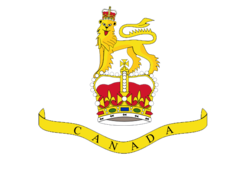 |
|
| Reference style | His Excellency The Right Honourable Son Excellence le très honorable |
|---|---|
| Spoken style | Your Excellency Votre Excellence |
| Alternative style | Sir Monsieur |
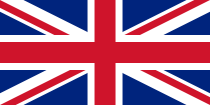 United Kingdom
United Kingdom
- 25 August 1875 – 1901: Mister John Buchan
- 1901 – 3 June 1935: John Buchan, Esquire
- 3 June 1935 – 11 February 1940: The Right Honourable The Lord Tweedsmuir
 Canada
Canada
- 2 November 1935 – 11 February 1940: His Excellency The Right Honourable The Lord Tweedsmuir, Governor General and Commander-in-Chief of the Militia and Naval and Air Forces of Canada
Buchan's style and title as governor general of Canada was, in full, and in English: His Excellency The Right Honourable Sir John Buchan, Baron Tweedsmuir of Elsfield, Companion of the Order of Companions of Honour, Knight Grand Cross of the Most Distinguished Order of Saint Michael and Saint George, Knight Grand Cross of the Royal Victorian Order, Governor General and Commander-in-Chief of the Militia and Naval and Air Forces of Canada, and in French: Son Excellence le très honorable Sir John Buchan, baron Tweedsmuir, compagnon de l'ordre des compagnons d'honneur, chevalier grand-croix du très distingué ordre de Saint-Michel et Saint-George, chevalier grand-croix de l'ordre royal de Victoria, gouverneur général et commandant en chef de la milice et des forces navales et aériennes du Canada.
Tweedsmuir's post-nominal letters are, in order according to the Oxford University Calendar Notes on Style:[27] GCMG, GCVO, CH, PC, DCL(hc) MA Oxon, DD(hc) LLD(hc) Tor, LLD(hc) Harv, LLD(hc) Yale, LLD(hc) McGill, LLD(hc) Mont, LLD(hc) Glas, LLD(hc) StAnd
Honours
| Ribbon bars of the Lord Tweedsmuir | |||
|---|---|---|---|
- Appointments
 1 January 1932 – 11 February 1940: Companion of the Order of the Companions of Honour (CH)
1 January 1932 – 11 February 1940: Companion of the Order of the Companions of Honour (CH) 23 May 1935 – 11 February 1940: Knight Grand Cross of the Most Distinguished Order of Saint Michael and Saint George (GCMG)
23 May 1935 – 11 February 1940: Knight Grand Cross of the Most Distinguished Order of Saint Michael and Saint George (GCMG) 2 November 1935 – 11 February 1940: Chief Scout for Canada
2 November 1935 – 11 February 1940: Chief Scout for Canada 2 November 1935 – 11 February 1940: Honorary Member of the Royal Military College of Canada Club
2 November 1935 – 11 February 1940: Honorary Member of the Royal Military College of Canada Club 28 May 1937 – 11 February 1940: Member of His Majesty's Most Honourable Privy Council (PC)[28]
28 May 1937 – 11 February 1940: Member of His Majesty's Most Honourable Privy Council (PC)[28] 15 June 1939 – 11 February 1940: Knight Grand Cross of the Royal Victorian Order (GCVO)[28]
15 June 1939 – 11 February 1940: Knight Grand Cross of the Royal Victorian Order (GCVO)[28]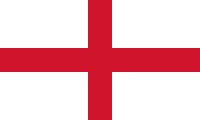 : Honorary Fellow of Oxford University
: Honorary Fellow of Oxford University
- Medals
 1935: King George V Silver Jubilee Medal
1935: King George V Silver Jubilee Medal 1937: King George VI Coronation Medal
1937: King George VI Coronation Medal
- Awards
 1897: Stanhope essay prize
1897: Stanhope essay prize 1898: Newdigate Prize
1898: Newdigate Prize 1928: James Tait Black Memorial Prize
1928: James Tait Black Memorial Prize 4 December 1940: Silver Wolf Award (posthumous)[28]
4 December 1940: Silver Wolf Award (posthumous)[28]
- Foreign honours
.svg.png) 15 December 1918 – 11 February 1940: Knight of the Order of the Crown of Italy[28]
15 December 1918 – 11 February 1940: Knight of the Order of the Crown of Italy[28]
Honorary military appointments
 2 November 1935 – 11 February 1940: Colonel of the Regiment of the Governor General's Horse Guards
2 November 1935 – 11 February 1940: Colonel of the Regiment of the Governor General's Horse Guards 2 November 1935 – 11 February 1940: Colonel of the Regiment of the Governor General's Foot Guards
2 November 1935 – 11 February 1940: Colonel of the Regiment of the Governor General's Foot Guards 2 November 1935 – 11 February 1940: Colonel of the Regiment of the Canadian Grenadier Guards
2 November 1935 – 11 February 1940: Colonel of the Regiment of the Canadian Grenadier Guards
Honorary degrees
 20 June 1934: University of Oxford, Doctor of Civil Law (DCL)[28]
20 June 1934: University of Oxford, Doctor of Civil Law (DCL)[28] 1936: University of Toronto, Doctor of Laws (LLD)[29]
1936: University of Toronto, Doctor of Laws (LLD)[29] 1936: University of Toronto, Doctor of Divinity (DD)[29]
1936: University of Toronto, Doctor of Divinity (DD)[29]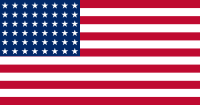 1937: Harvard University, Doctor of Laws (LLD)[23]
1937: Harvard University, Doctor of Laws (LLD)[23] 1937: Yale University, Doctor of Laws (LLD)[23]
1937: Yale University, Doctor of Laws (LLD)[23] : McGill University, Doctor of Laws (LLD)
: McGill University, Doctor of Laws (LLD) : Université de Montréal, Doctor of Laws (LLD)
: Université de Montréal, Doctor of Laws (LLD) : University of Glasgow, Doctor of Laws (LLD)
: University of Glasgow, Doctor of Laws (LLD) : University of St. Andrews, Doctor of Laws (LLD)
: University of St. Andrews, Doctor of Laws (LLD)
Honorific eponyms
- Geographic locations
 British Columbia: Tweedsmuir South Provincial Park
British Columbia: Tweedsmuir South Provincial Park British Columbia: Tweedsmuir North Provincial Park and Protected Area
British Columbia: Tweedsmuir North Provincial Park and Protected Area British Columbia: Tweedsmuir Peak[30]
British Columbia: Tweedsmuir Peak[30] Ontario: Tweedsmuir Avenue, Ottawa
Ontario: Tweedsmuir Avenue, Ottawa Saskatchewan: Tweedsmuir
Saskatchewan: Tweedsmuir Scotland: John Buchan Way, Broughton[31]
Scotland: John Buchan Way, Broughton[31]
- Schools
 British Columbia: Lord Tweedsmuir Secondary School, Surrey
British Columbia: Lord Tweedsmuir Secondary School, Surrey British Columbia: Tweedsmuir Hall (student residence), University of British Columbia
British Columbia: Tweedsmuir Hall (student residence), University of British Columbia Ontario: Tweedsmuir Public School, North Bay
Ontario: Tweedsmuir Public School, North Bay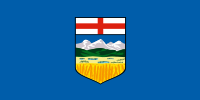 Alberta: Strathcona-Tweedsmuir School, Okotoks
Alberta: Strathcona-Tweedsmuir School, Okotoks
- Organizations
List of principal works
Fiction
|
|
|
Non-fiction
|
|
|
See also
- List of Scottish novelists
- List of European mystery writers
Notes
- ↑ Buchan once remarked: "I believe every Scotsman should be a Scottish nationalist. If it could be proved that a Scottish parliament were desirable... Scotsmen should support it."
References
- ↑ ""Scottish politician, diplomat, author and publisher"". National Archives. http://www.nationalarchives.gov.uk/documentsonline/medals-buchan.asp. Retrieved 1 March 2010.
- ↑ 2.0 2.1 "Queen's University Archives > Exhibits > John Buchan > Oxford, 1895-1899: Scholar Gypsy". Queen's University. http://archives.queensu.ca/Exhibits/buchan/oxford.html. Retrieved 30 March 2009.
- ↑ 3.0 3.1 3.2 Hillmer, Norman. "Biography > Governors General of Canada > Buchan, John, 1st Baron Tweedsmuir". In Marsh, James H.. The Canadian Encyclopedia. Toronto: Historica Foundation of Canada. http://www.thecanadianencyclopedia.com/index.cfm?PgNm=TCE&Params=A1ARTA0001071. Retrieved 31 March 2009.
- ↑ Lee, Sidney, ed (1950). The Dictionary of National Biography. New York: Oxford University Press. pp. 113.
- ↑ "Queen's University Archives > Exhibits > John Buchan > Home and Family". Queen's University. http://archives.queensu.ca/Exhibits/buchan/family.html. Retrieved 30 March 2009.
- ↑ 6.0 6.1 6.2 6.3 6.4 6.5 Office of the Governor General of Canada. "Governor General > Former Governors General > Lord Tweedsmuir of Elsfield". Queen's Printer for Canada. http://archive.gg.ca/gg/fgg/bios/01/tweedsmuir_e.asp. Retrieved 14 April 2010.
- ↑ "John Buchan Society > The Man". The Buchan Society. http://www.johnbuchansociety.co.uk/theman.html. Retrieved 27 March 2009.
- ↑ Parry, J. P. (2002). "From the Thirty-Nine Articles to the Thirty-Nine Steps: reflections on the thought of John Buchan". In Bentley, Michael. Public and Private Doctrine: Essays in British History presented to Maurice Cowling. Cambridge: Cambridge University Press. p. 226.
- ↑ Parry 2002, p. 227
- ↑ "Queen's University Archives > Exhibits > John Buchan > World War 1: The Department of Information". Queen's University. http://archives.queensu.ca/Exhibits/buchan/wwi.html. Retrieved 30 March 2009.
- ↑ Sanders, M. L. (1975). The Historical Journal (London: Carfax Publishing) (18): pp. 119–146. ISSN 0143-9685.
- ↑ Hansard, 24 November 1932.
- ↑ Parry 2002, p. 234
- ↑ Defries, Harry (2001). Conservative Party Attitudes to Jews, 1900-1950. London: Routledge. pp. 148. ISBN 0714652210.
- ↑ London Gazette: no. 33785, p. 12, 29 December 1931. Retrieved 29 March 2009.
- ↑ London Gazette: no. 34164, p. 3443, 28 May 1935. Retrieved 29 March 2009.
- ↑ London Gazette: no. 34167, p. 3620, 4 June 1935. Retrieved 26 March 2009.
- ↑ Smith, Janet Adam (1965). John Buchan: a Biography. Boston: Little Brown and Company. p. 423.
- ↑ "Royal Visit". Time (New York: Time Inc.) IXX (17). October 21, 1957. ISSN 0040-781X. http://www.time.com/time/magazine/article/0,9171,937945,00.html. Retrieved 29 March 2009.
- ↑ Saunders, Doug (27 June 2009). "Canada's mistaken identity". The Globe and Mail. http://www.theglobeandmail.com/news/opinions/columnists/doug-saunders/canadas-mistaken-identity/article1199074/. Retrieved 28 June 2009.
- ↑ Hubbard, R.H. (1977). Rideau Hall. Montreal and London: McGill-Queen's University Press. p. 187. ISBN 978-0773503106.
- ↑ Tony O'Donohue v. Her Majesty the Queen in Right of Canada and Her Majesty the Queen in Right of the United Kingdom, 01-CV-217147CM , s. 34 (Ontario Superior Court of Justice 26 June 2006).
- ↑ 23.0 23.1 23.2 23.3 Galbraith, William (1989). "Fiftieth Anniversary of the 1939 Royal Visit". Canadian Parliamentary Review (Ottawa: Commonwealth Parliamentary Association) 12 (3). http://www2.parl.gc.ca/Sites/LOP/Infoparl/english/issue.asp?param=130&art=820. Retrieved 29 March 2009.
- ↑ Buchan, John (1918). Mr Standfast. Hodder & Stoughton.
- ↑ Buchan, John (1928). Montrose - A History. Houghton Mifflin.
- ↑ Ministry of the Environment. "BC Parks > Find a Park > Tweedsmuir South Provincial Park > History". Queen's Printer for British Columbia. http://www.env.gov.bc.ca/bcparks/explore/parkpgs/tweeds_s/nat_cul.html#History. Retrieved 27 May 2009.
- ↑ Oxford University Gazette > Oxford University Calendar > Notes on Style. University of Oxford. http://www2.ox.ac.uk/gazette/calendar/style.pdf. Retrieved July 27, 2010.
- ↑ 28.0 28.1 28.2 28.3 28.4 "Material relating to John Buchan, first Lord Tweedsmuir (1875-1940)". National Library of Scotland. http://www.nls.uk/catalogues/online/cnmi/inventories/acc12329.pdf. Retrieved 29 March 2009.
- ↑ 29.0 29.1 Honorary Degree Recipients 1850 - 2008. Toronto: University of Toronto. 30 June 2008. p. 8. http://www.governingcouncil.utoronto.ca/Assets/Governing+Council+Digital+Assets/Boards+and+Committees/Committee+for+Honorary+Degrees/degreerecipients1850tillnow.pdf.
- ↑ "Canadian Mountain Encyclopedia > Tweedsmuir Peak". Mountain Equipment Co-op. http://bivouac.com/MtnPg.asp?MtnId=4987. Retrieved 27 May 2009.
- ↑ "Find a Walk > The John Buchan Way (Peebles to Broughton)". Walking Scotland. http://walking.visitscotland.com/walks/southscotland/213763. Retrieved 26 March 2009.
- ↑ "John Buchan Centre". John Buchan Society. http://www.johnbuchansociety.co.uk/jbcentre.htm. Retrieved 26 March 2009.
Further reading
- Daniell, David, The Interpreter's House: A Critical Assessment of John Buchan (Nelson, 1975) ISBN 0-17-146051-0
- Lownie, Andrew, John Buchan: The Presbyterian Cavalier (David R. Godine Publisher, 2003) ISBN 1-56792-236-8
- Macdonald, Kate, John Buchan: A Companion to the Mystery Fiction (McFarland & Company, 2009) ISBN 978-0-7864-3489-3
- Macdonald, Kate (ed.), Reassessing John Buchan: Beyond 'The Thirty-Nine Steps' (Pickering & Chatto, 2009) ISBN 978-1-85196-998-2
- Smith, Janet Adam, John Buchan: A Biography (1965) (Oxford University Press, reissue 1985) ISBN 0-19-281866-X
- Waddell, Nathan, Modern John Buchan: A Critical Introduction (Cambridge Scholars Publishing, 2009) ISBN 978-1-4438-1370-9
External links
- Hansard 1803–2005: contributions in Parliament by John Buchan
- Website of the Governor General of Canada entry for John Buchan
- The Canadian Encyclopedia entry for John Buchan
- The John Buchan Society
- John Buchan Museum
- Buchanalia
- Project Gutenberg Australia entry for the works of John Buchan
- Works by John Buchan at Project Gutenberg
- John Buchan at the Internet Movie Database
- "Man on the Run" Thrillers: A Checklist by David L. Vineyard.
| Parliament of the United Kingdom | ||
|---|---|---|
| Preceded by Henry Craik and George Berry and Dugald Cowan |
Member of Parliament for Combined Scottish Universities Apr 1927 – Jun 1935 With: George Berry to 1931 Dugald Cowan to 1934 Noel Skelton from 1931 George Alexander Morrison from 1934 |
Succeeded by John Graham Kerr and Noel Skelton and George Alexander Morrison |
| Academic offices | ||
| Preceded by J. M. Barrie |
Chancellor of the University of Edinburgh 1937–1940 |
Succeeded by The Marquess of Linlithgow |
| Peerage of the United Kingdom | ||
| Preceded by New Creation |
Baron Tweedsmuir 3 June 1935 – 11 February 1940 |
Succeeded by John Buchan |
|
|||||